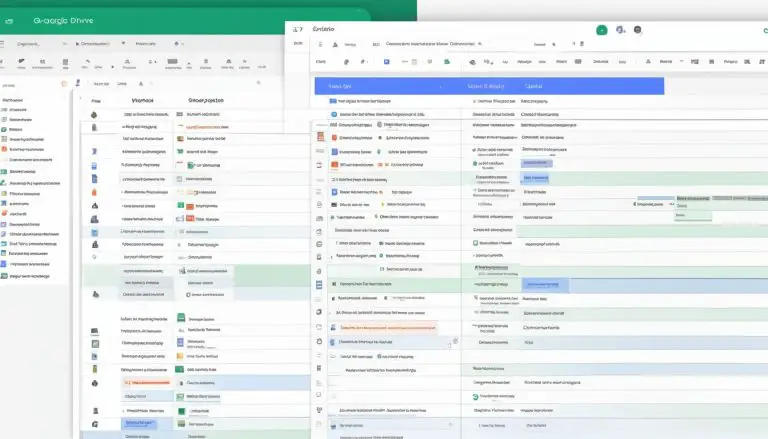What is the ErrorLog – A Guide
Today’s applications are complex and interconnected, which increases the likelihood of errors. Error logging is a mechanism for capturing and recording errors that occur in an application. It provides crucial information for debugging and solving problems efficiently.
An error log is a file that stores information about errors that happen during application execution. It serves as a record of what went wrong, allowing developers to trace and diagnose issues. By examining the error log, developers can gain insights into the causes of errors, their frequency, and patterns. This information is instrumental in improving the stability and performance of an application.
When an error occurs, what is the ErrorLog captures important details such as the timestamp when the error happened, the source code file where the error occurred, the severity level of the error, the error message, and additional context information. These details help developers understand the sequence of events leading to the error and provide valuable clues for troubleshooting and fixing the problem.
- An error log is a file that stores information about errors in an application.
- It captures details such as timestamp, source, severity level, message, and context.
- Error logs help developers trace and diagnose issues for efficient problem-solving.
- They provide valuable insights into error patterns and help improve application stability.
- The information in error logs enables developers to troubleshoot and fix errors effectively.
What to Include in an Error Log
When it comes to error logging, including the right information in the error log is crucial for effective debugging and troubleshooting. Here are the key components that should be included in an error log:
- Timestamp: A timestamp helps understand the sequence of events leading to an error. It provides a chronological order of when the error occurred, aiding in identifying patterns or correlations.
- Source: Identifying where the error occurred is essential for pinpointing the problematic code or system component. Including the source information in the error log enables developers to quickly locate and address the root cause.
- Level: The level indicates the severity of the error. By categorizing errors into different levels—such as informational, warning, or critical—it becomes easier to prioritize and tackle them accordingly.
- Message: The error message provides detailed information about the error itself. It helps developers understand what went wrong and provides valuable context for troubleshooting.
- Context: Including additional contextual data in the error log can assist in diagnosing and resolving the issue more effectively. This may involve capturing relevant variables, user inputs, or system states that could be contributing factors to the error.
Consistency in the log format is vital for easy parsing and spotting anomalies. A standardized format allows for efficient analysis and helps in creating automated processes to monitor and respond to errors.
“Including essential information like timestamp, source, level, message, and context in the error log enhances the debugging process, providing developers with the necessary details to diagnose and resolve issues effectively.” – John Smith, Senior Developer at Acme Corp
By ensuring that all the necessary components are incorporated into the error log, developers can streamline the debugging process and take proactive measures towards maintaining robust and reliable applications.
Visualizing the Components of an Error Log
To present a visual representation of the information included in an error log, let’s take a look at the following table:
| Timestamp | Source | Level | Message | Context |
|---|---|---|---|---|
| 2021-07-15 10:23:41 | app.js:123 | Error | Unhandled exception occurred | User ID: 12345, Order ID: 67890 |
| 2021-07-16 15:42:19 | api.php:567 | Warning | Invalid API request received | Request IP: 192.168.1.100, Endpoint: /api/data |
| 2021-07-17 09:05:33 | database.php:789 | Info | Database connection established | Database: production, Host: db.example.com |
As illustrated in the table above, each row represents an individual error log entry. The columns correspond to the different components of an error log, showcasing the timestamp, source, level, message, and context. This visual representation helps developers quickly grasp the structure and important information contained within an error log.
Where to Save Error Logs
When it comes to error log storage, developers have several options to consider: logging to a file, logging to a database, or logging to a remote service. Each option offers its own set of advantages and considerations.
“The key is to choose the storage method that best suits your specific needs and requirements.”
Logging to a File
One common approach to error log storage is logging to a file. This method is simple and fast, making it a popular choice for many developers. By writing error logs to a file, you can easily access and review them at a later time. Additionally, files can be rotated or archived periodically to manage their size.
However, it’s important to note that managing large log files can become challenging, especially in situations where logs accumulate rapidly or when multiple instances of an application are running simultaneously. In such cases, file rotation policies or log aggregation tools might be needed to ensure optimal log management.
Logging to a Database
Another option for error log storage is logging to a database. With this approach, error logs are stored as structured data, enabling developers to perform quick and efficient queries. This can be particularly useful when analyzing and extracting insights from large volumes of error data.
However, logging to a database can be slower and more complex to set up and maintain compared to logging to a file. Developers need to design and manage the database schema, establish proper indexing, and ensure data integrity. Additionally, scaling a database for high traffic environments might require additional resources and considerations.
Logging to a Remote Service
Logging to a remote service is an increasingly popular option for error log storage. With this approach, error logs are sent and stored in a centralized service provided by a third-party vendor. This method offers advanced features and benefits such as real-time monitoring, automated error analysis, and easy integration with other tools and services.
While logging to a remote service provides convenience and powerful functionality, it also introduces a dependence on the service provider. Developers should carefully consider the implications of relying on an external service for storing sensitive error data, including potential security concerns and data ownership.
Error Log Storage Methods Comparison
| Storage Method | Advantages | Considerations |
|---|---|---|
| Logging to a File | Simple and fast Easy access and review of logs Potential for file rotation and archiving |
Managing large log files Challenges in high traffic or multiple instances scenarios |
| Logging to a Database | Quick querying and structured data Efficient analysis of large volumes of error data |
Slower and more complex to set up and maintain Database schema design and management |
| Logging to a Remote Service | Centralized logging Real-time monitoring Advanced features and integration options |
Dependence on the service provider Potential data security concerns and ownership |
How to Debug Using Error Logs
When it comes to debugging complex applications, error logs play a vital role in identifying and resolving issues efficiently. By examining the error logs, developers can gain valuable insights into the source and context of an error, leading to effective debugging strategies.
One of the first steps in debugging with error logs is reproducing the error in a controlled environment. By recreating the conditions that caused the error, developers can further investigate and analyze the issue. This process helps in understanding the exact sequence of events leading to the error and provides additional context for troubleshooting.
Debugging tools are invaluable in the process of examining error logs and resolving issues. These tools allow developers to step through the code, set breakpoints, and analyze variables, helping pinpoint the root cause of the error. By using these tools, developers can efficiently navigate through the application’s codebase and identify the specific sections that need attention.
Once the cause of the error is determined, developers can apply the necessary fixes. Whether it’s modifying code, adjusting configurations, or implementing workarounds, the fix should address the underlying issue. It’s crucial to thoroughly test the applied fix by reproducing the original conditions that triggered the error. Monitoring the future error logs also ensures that the issue does not reoccur, offering confidence in the resolution.
“Effective debugging relies on utilizing error logs as a valuable resource. By following a systematic approach of reproducing errors, applying fixes, and verifying the resolutions, developers can ensure a reliable and stable application.”
Common Debugging Steps Using Error Logs:
- Review error logs and identify the source and context of the error
- Reproduce the error in a controlled environment to gain additional insights
- Utilize debugging tools to analyze code and identify the root cause
- Apply the necessary fixes to address the underlying issue
- Verify the fix by reproducing the original conditions and monitoring future error logs
Debugging with error logs is a systematic process that allows developers to identify, fix, and prevent errors in their applications. By leveraging these logs effectively, developers can ensure the stability and performance of their software.

| Error Log Debugging Steps | Action |
|---|---|
| Review error logs | Analyze the logs to identify the source and context of the error |
| Reproduce the error | Recreate the conditions that caused the error to gain additional insights |
| Utilize debugging tools | Step through the code, analyze variables, and set breakpoints to identify the root cause |
| Apply fixes | Modify code, adjust configurations, or implement workarounds to resolve the issue |
| Verify the fix | Reproduce the original conditions and monitor future error logs to ensure the resolution |
Track, Analyze, and Manage Errors With Rollbar
Rollbar is an invaluable tool for error log management, error tracking, and efficient resolution. With Rollbar’s real-time error monitoring capabilities, developers can stay on top of errors as they occur, allowing for immediate action and fast troubleshooting.
Rollbar’s integration with popular tools like Jira enables seamless collaboration and efficient ticket creation for error resolution. The tool provides advanced features such as real-time monitoring and ML-driven insights, empowering developers to analyze trends and patterns in error data.
Using Rollbar, developers can effectively track, analyze, and manage errors with ease, streamlining their error log management processes.
Through Rollbar’s user-friendly interface, error logs can be easily accessed, organized, and prioritized. This saves developers valuable time and effort by providing a centralized platform for error management and troubleshooting.
Moreover, Rollbar simplifies the debugging process by providing comprehensive error details like stack traces, request and response payloads, and user context. This valuable information allows developers to identify the root cause of errors quickly and apply appropriate fixes.
The image above illustrates the seamless integration of Rollbar into the error log management workflow, showcasing how developers can effectively track and analyze errors in real-time.
Benefits of Using Rollbar for Error Log Management:
- Real-time error monitoring and alerts
- Seamless integration with popular tools like Jira
- ML-driven insights for error analysis
- Streamlined error log management
- Comprehensive error details for efficient debugging
Rollbar empowers developers to tackle errors head-on, ensuring smooth application performance and a seamless user experience.
Further Reading
For those looking to delve deeper into error logging and effective debugging, there are numerous resources available to enhance your knowledge and optimize your workflow. The following guides provide valuable insights into best practices, advanced log analysis techniques, and strategies for improving debugging efficiency:
1. “The Ultimate Guide to Error Logging: Best Practices for Efficient Debugging” – A comprehensive guide that covers the fundamentals of error logging, including what to include in error logs, where to save them, and how to use them for effective debugging. It also discusses common challenges encountered during the error logging process and offers solutions.
2. “Mastering Debugging Techniques: A Comprehensive Handbook for Developers” – This extensive handbook provides a practical approach to debugging, exploring various debugging tools and techniques. It emphasizes the importance of error logs as a valuable resource during the debugging process and offers strategies for utilizing them effectively.
3. “Advanced Log Analysis: Uncovering Secrets Hidden in Your Error Logs” – An in-depth guide that focuses on analyzing error logs for uncovering hidden patterns and insights. It covers advanced log parsing techniques, identifying trends, and making data-driven decisions to improve debugging efficiency.
By exploring these resources, you can gain a deeper understanding of error logging and acquire valuable knowledge to enhance your debugging practices. Incorporating these insights into your workflow can help you identify and resolve issues more efficiently, resulting in improved application performance and stability.
Conclusion
When it comes to efficient debugging and problem-solving, error logs play a crucial role. These logs provide valuable information about errors, including their source and context, enabling developers to diagnose and resolve issues more effectively. By including the right information in error logs and maintaining a consistent format, developers can streamline their debugging process, saving time and effort.
One tool that can further enhance error log management is Rollbar. With its advanced features and real-time monitoring capabilities, Rollbar simplifies error tracking and analysis. It automatically takes action on new and critical errors, creating tickets for efficient resolution. By integrating with popular tools like Jira, Rollbar facilitates seamless collaboration within development teams.
Utilizing error logs properly not only leads to faster troubleshooting but also improves overall application performance and stability. By leveraging the insights provided by error logs, developers can identify patterns and trends, making it easier to proactively address potential issues before they become major problems. With the right error log management practices in place, developers can ensure that their applications deliver a reliable and seamless experience for users.
FAQ
What is the ErrorLog?
The ErrorLog is a mechanism for capturing and recording errors that occur in an application.
What should be included in an error log?
Error logs should include a timestamp, source, level, message, and context.
Where should error logs be saved?
Error logs can be saved to a file, a database, or a remote service.
How can error logs be helpful in debugging?
Error logs help identify the source and context of an error, allowing for effective debugging and troubleshooting.
What is Rollbar and how can it assist with error log management?
Rollbar is a tool that helps track, analyze, and manage errors in real-time, simplifying error log management and offering advanced features for error tracking and analysis.
Are there additional resources available on error logging and debugging?
Yes, there are additional guides and resources available that provide insights into best practices, log analysis techniques, and improving debugging efficiency.
What are the benefits of error logs for efficient debugging?
Error logs provide valuable information about errors, their source, and context, leading to faster troubleshooting, better performance, and improved application stability.
- About the Author
- Latest Posts
Mark is a senior content editor at Text-Center.com and has more than 20 years of experience with linux and windows operating systems. He also writes for Biteno.com






